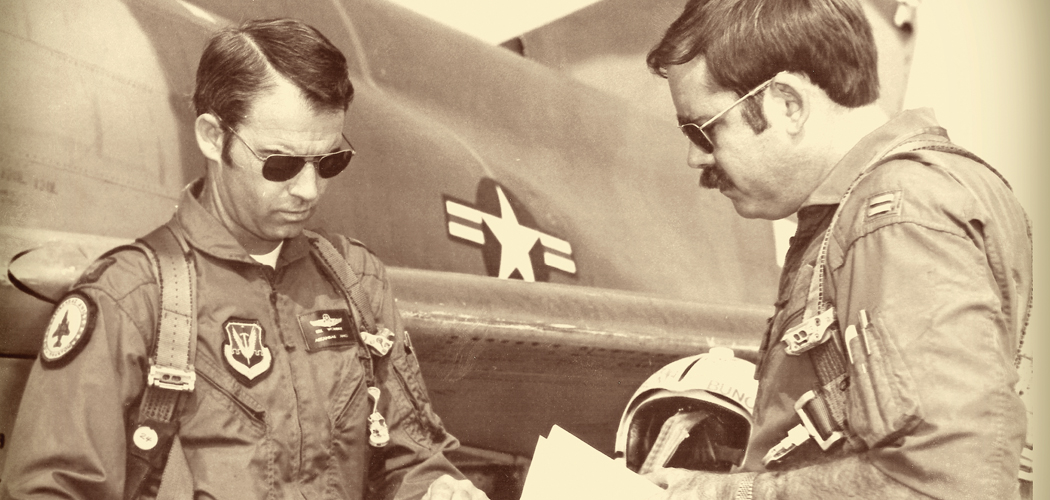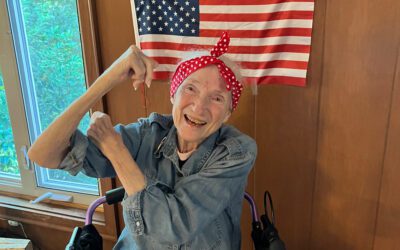[title subtitle=”words: Anita Paddock
Images: Jeromy Price and courtesy Bill Womble”]
It was evident early on that Bill Womble’s life would revolve around flight. As a young boy he often spent hours at Tilles Park in Fort Smith, Arkansas, where he played with his model airplanes, the kind made from kits found at dime-stores across the nation. Those were idyllic days, and he remembers them fondly. But life changed suddenly when he was fourteen. Bill’s father died and he felt the immeasurable weight of it. His mother, Anna Lee, told him not to worry. She felt certain she could find work, and she began intently searching for a job.
“She went to work as the attendance clerk at Fort Smith Senior High [now Northside High School] and later became the registrar,” Bill says. “It was a particularly hard time for a teenage boy to lose his father, but my dad’s brother, Ben, stepped up and gave me my first flying lessons.”
Bill graduated from Fort Smith Senior High in 1959 and attended the University of Arkansas in Fayetteville. He immediately joined the Arkansas Air National Guard and was commissioned in the 188th Fighter Wing. He attended Air Force Pilot Training School at Craig AFB in Selma, Alabama.
His fellow trainees came from the Air Force Academy, ROTC, and two students from Iran and Pakistan. Bill, who represented the Arkansas Air National Guard, graduated at the top of his class in flying, and his Uncle Ben was there to witness the ceremony.
After Bill’s time in Alabama, he landed at Luke AFB in Phoenix, Arizona, for twenty-eight weeks of combat training in the F-100 Super Saber jet fighter. “The F-100 was the hottest fighter of its time,” Bill says. “It was the most coveted aircraft assignment.”
He remembers flying a low-level training mission that took him over the Grand Canyon. He dropped down well below the canyon rim where he got a close look at its grandeur, something that could never happen today. “That was well before the FAA prohibited such flying over the canyon.”
From there, Bill returned to Fort Smith where he flew jets for testing and evaluation purposes. Some of the required tests were conducted above the speed of sound until the government prohibited supersonic flying over the continental US. “They made this big boom when we crossed the sound barrier,” Bill explains. “Farmers complained that they made their chickens stop laying eggs, their cows go dry, and cracked the foundation in their houses.”
Whatever was happening on the ground, up in the sky things were wonderful. Bill loved these flights, the speed, the power of the jets, the world dropping away as he rose high in the sky.
But even during those times, he was aware that what he was doing was dangerous. On a spring day in 1972, Bill, who was then in his early thirties, invited Lieutenant Colonel Joe Jamell, an officer in the 188th, to go for a ride in an F-101B two-seater trainer jet. Things were fine, until it was time to return to the base. The landing gear wouldn’t engage, and Bill was trying everything he could think of to get the plane safely home. When nothing worked, he flew the jet across the Arkansas River to the Peno Bottoms, not far from Spiro, Oklahoma. He and Lieutenant Colonel Jamell jumped from the plane, which then crashed, caught fire, and scattered in pieces across the field. “Jamell [who landed in a tree] got a bad case of poison ivy,” Bill says. “I got a broken back.”
As a keepsake of sorts, or maybe a good luck charm, Bill kept the small valve that was found among the plane’s wreckage, the valve that caused the landing gear to malfunction.
It took six months for Bill to heal and return to the cockpit. He flew for another twenty-three years and retired at the mandatory age of fifty-five in May, 1996.
He felt a little lost after that, and knew he needed a hobby. He thought about buying a motorcycle or an ultra-light airplane. But neither of those things happened. Instead, he took up flying radio-controlled model airplanes.
Bill had known there was a group called the Flightmasters. He had seen their flying field along Highway 71 South a mile or so past Rye Hill, on the outskirts of Fort Smith. “I just stopped by one day and was warmly welcomed. The next thing I knew I had joined the club. I’ve enjoyed the fellowship because we all share a fascination with airplanes and a passion for aviation in general.”
The Fort Smith Flightmasters Model Airplane Club is chartered by both the Academy of Model Aeronautics and the International Miniature Aircraft Association. The group started back in 1957, and one of the original members, Ron Roberts, is still active in the club.
Bill bought his first radio-controlled airplane for $250. “The first time I flew it, it crashed immediately. The same laws of aerodynamics that apply to full size airplanes equally apply to model airplanes. That humbled me some, but I was hooked.”
Some of the planes are built by their owners (with help from their friends) and some are bought as kits or already assembled. The planes are flown by hand-held computer controlled transmitters, and like the airplanes they fly, come in a wide price range. Right now, Bill is finishing up an orange and black plane he ordered online. It has a six foot wingspan, is six feet long, and has a gas engine. He’s also helping the club president, who’s building a model plane that looks like the one his dad flew in World War II. When that plane is finished, it will weigh about thirty-five pounds.
One of the best things about the club is how they encourage new members. To help them get started, the more experienced flyer will link his controller to the trainee’s plane, and if things start to go south, the older member takes over, which is a great comfort to those still learning.
In 2013, the Flightmasters had to move their field from the familiar one on Highway 71 because it was located in the path of the Interstate 49 construction work. Their new field is past Barling, off Highway 22, and a little east of Highway 59. In order to use the land, the club received permission from Ivy Owen and the Fort Chaffee Redevelopment Authority.
The group, which currently has more than forty members, held its first national event last September, bringing in pilots from as far away as Chicago and San Antonio. While hosting other pilots is great fun for the group, their real joy is giving back to the community. They attend functions year round, and last summer, on the parking lot of Grace Community Church, Bible School attendees were treated with candy dropped out of the “bomb bays” of specially equipped models.
Bill loves every aspect of the group. Flightmasters has been a great experience for him. He found the group at a time when he felt a little lost, and he’s met so many people and made so many friends. “There’s a lot of camaraderie, a lot of hangar talk, and we drink a lot of coffee,” he says, and then smiles. “It really is a great group of people.”
It seems fitting that Bill’s fondness for planes continues today. As a young boy, he dreamed of flying, playing in the park with his simple model planes. As a young man he studied diligently to learn all he could about flying, and now, retired, he’s flying again, this time using a controller to set his plane in action, to watch it soar across the bright blue skies, to carefully bring it home again.
[separator type=”thin”]
For more on Flightmasters, how to join, and when they meet, visit fortsmithflightmasters.com.




